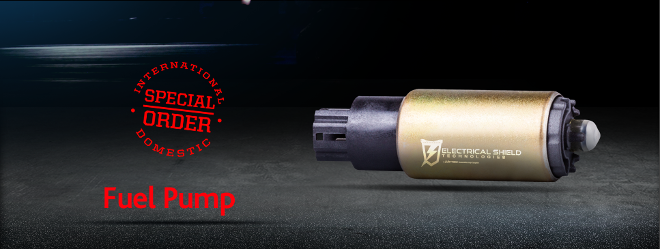

Hytec Automotive fuel pumps, designed for outstanding fuel delivery, easy installation and proper fit are compatible with all fuels and additives. Our pumps, manufactured with solid-state worry free electronics also eliminates vapor lock and flooding. Hytec pumps work well for fuel transfer and make a great stand-alone or booster pump. These self-priming pumps work with a quality engineered two-wire design and on a 12 Volt negative ground systems only.
Features:
A fuel pump is a frequently essential component on a car or other internal combustion engine device. Many engines do not require any fuel pump at all, requiring only gravity to feed fuel from the fuel tank through a line or hose to the engine. But in non-gravity feed designs, fuel has to be pumped from the fuel tank to the engine and delivered under low pressure to the carburetor or under high pressure to the fuel injection system. Often, carbureted engines use low-pressure mechanical pumps that are, mounted outside the fuel tank, whereas fuel injected engines often use electric fuel pumps that are, mounted inside the fuel tank.
In many modern cars, the fuel pump is usually electric and located inside the fuel tank. The pump creates positive pressure in the fuel lines, pushing the gasoline to the engine. The higher gasoline pressure raises the boiling point. Placing the pump in the tank puts the component least likely to handle gasoline vapor well (the pump itself) farthest from the engine, submersed in cool liquid. Another benefit to placing the pump inside the tank is that it is less likely to start a fire. Though electrical components (such as a fuel pump) can spark and ignite fuel vapors, liquid fuel will not explode and therefore submerging the pump in the tank is one of the safest places to put it. In most cars, the fuel pump delivers a constant flow of gasoline to the engine; fuel not used is, returned to the tank. This further reduces the chance of the fuel boiling, since it is never kept close to the hot engine for too long.
The ignition switch does not carry the power to the fuel pump; instead, it activates a relay, which will handle the higher current load. It is common for the fuel pump relay to become oxidized and cease functioning; this is much more common than the actual fuel pump failing. Modern engines utilize solid-state control, which allows the fuel pressure to be controlled via pulse-width modulation of the pump voltage. This increases the life of the pump, allows a smaller and lighter device to be used, and reduces electrical load.
The fuel sending unit assembly may be a combination of the electric fuel pump, the filter, the strainer, and the electronic device used to measure the amount of fuel in the tank via a float attached to a sensor, which sends data to the dash-mounted fuel gauge. The fuel pump by itself is a relatively inexpensive part. However, a mechanic at a garage might have a preference to install the entire unit assembly.